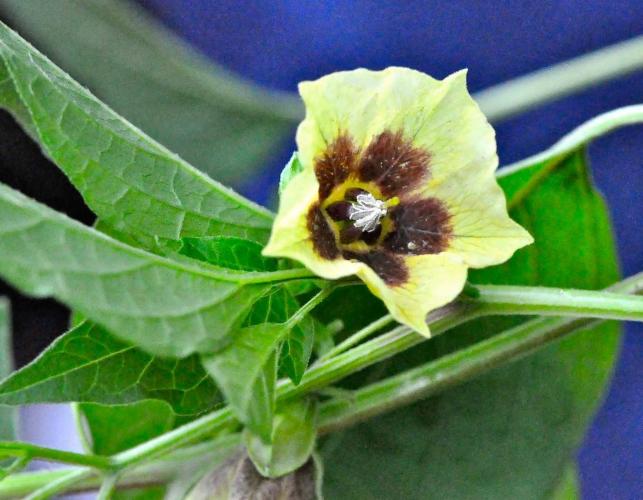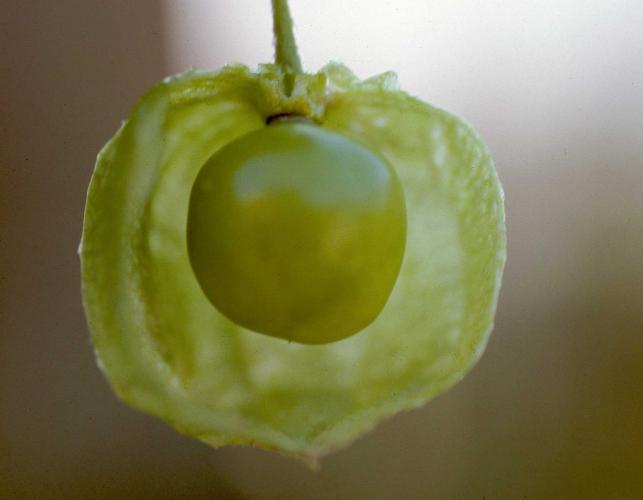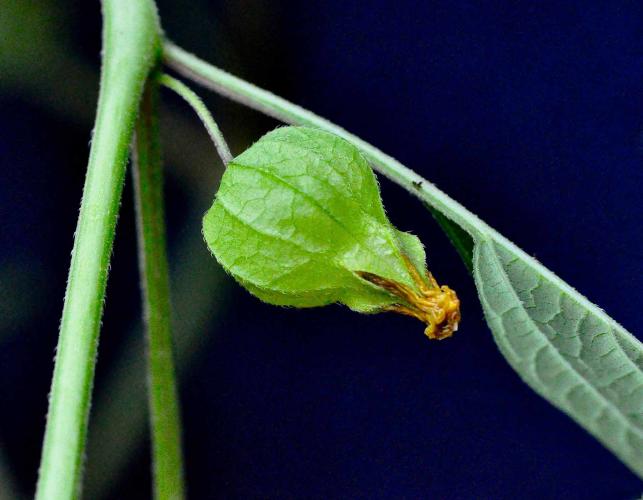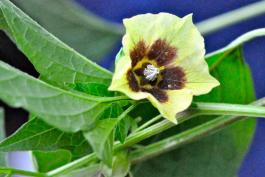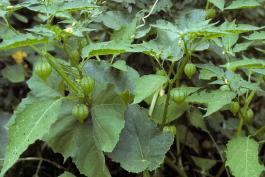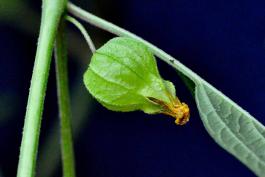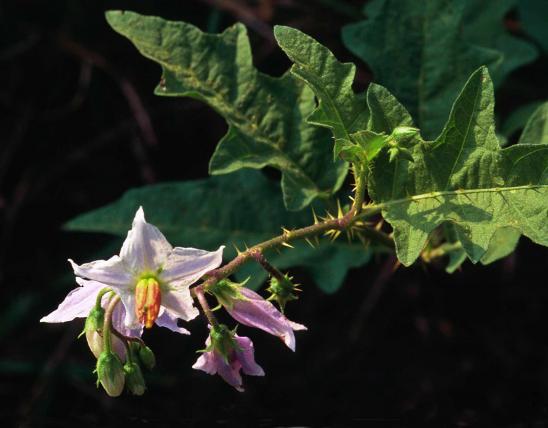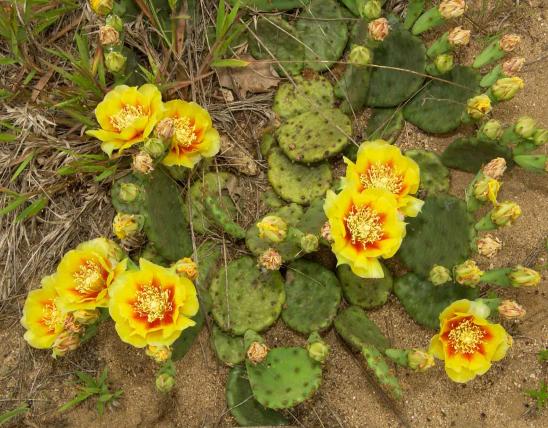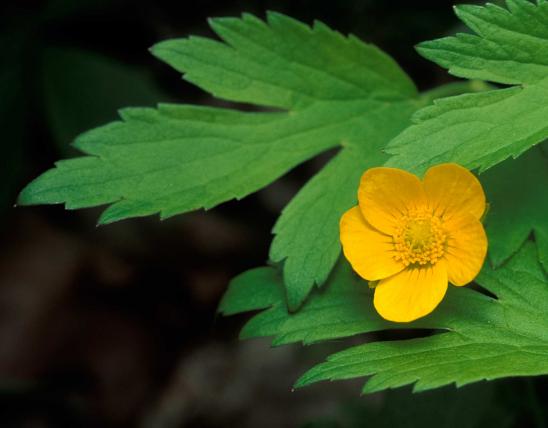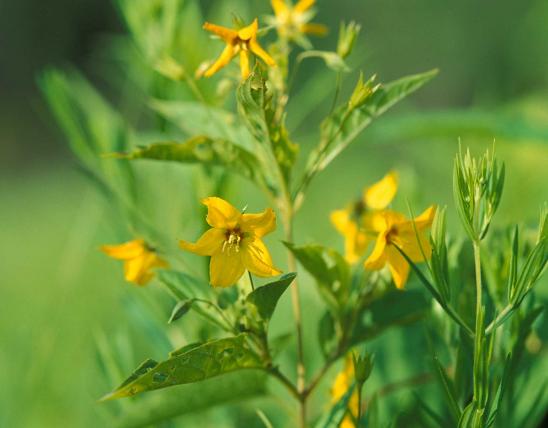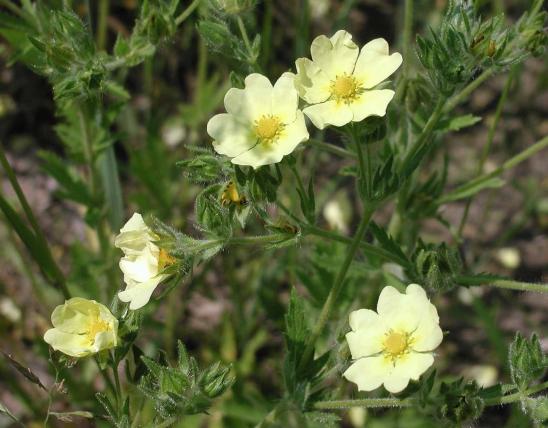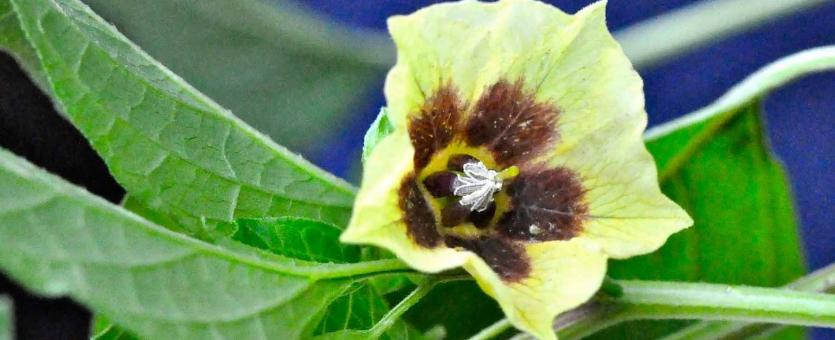
Common ground cherry is an erect, branched perennial. Flowers arise singly from leaf axils, bell-shaped, about 1 inch long, sulphur to lemon yellow, the inner surface with 5 purplish spots or smudges toward the base that are sometimes merged into a ring. Blooms May–September. Leaves alternate, long petioled, either entire or with lobelike teeth, the margins of the 2 sides unsymmetrical, ovate. Fruit the “ground cherry,” a berry in a crisp, papery husk, which is 5-sided, pointed, and lanternlike.
Similar species: There are 13 Physalis species recorded for Missouri. All share the characteristic balloonlike, papery husk around the berry, which is why these plants are called “husk tomatoes.”
Height: about 2 feet.
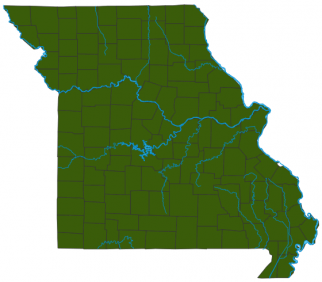
Scattered nearly statewide.
Habitat and Conservation
Grows in bottomland forests, rich upland forests, banks of streams, rivers, and spring branches, bottomland prairies, swales in upland prairies, saline marshes, fens, margins of ponds and lakes, swamps, sloughs, savannas, bases and ledges of bluffs, and rarely glades; also ditches, pastures, fields, railroads, roadsides, and other disturbed areas.
Status
The leaves and stems of plants in the nightshade family, as a general rule, contain toxic alkaloids and are poisonous to people and livestock. However, in several species, the fruits or tubers – where the plant stores large amounts of sugars and starches – can be quite edible. Examples include tomatoes, potatoes, eggplants, bell peppers, and tomatillos. Ground cherry is closely related to tomatillo; they are in the same genus, and both have edible berries covered by a papery husk.
Human Connections
The tart, tomatillo-like berries start out green, turn yellow, and fall to the ground. Discard the husks and make jam, jelly, or pie, or eat the berries fresh. Maybe it can be used to make a salsa verde. Of course, Native Americans ate the flavorful fruit, too, and developed several recipes for it.
Ecosystem Connections
Bees and other insects visit the flowers, and a number of other insects feed on the foliage. Mammals avoid the foliage because it is toxic to them. The fruits, however, are eaten by birds and some mammals, which disperse the undigested seeds.
